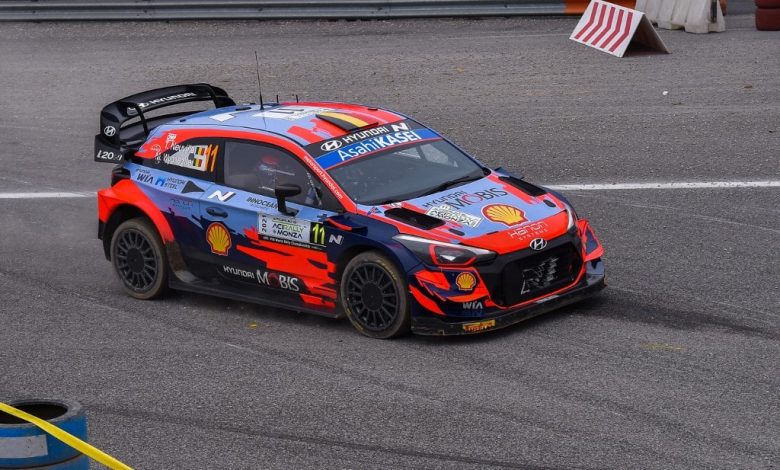WRC and Hybrid Cars Regulations

The 50th season of the World Rally Championship (WRC Rally) is already underway, and it’s living up to its name as the most unpredictable rally season in decades, largely thanks to the regulation rules changes.
By moving away from the last year’s Group B monsters, the 2022 WRC season introduced brand new 500hp beasts that got unleashed on some of the world’s most challenging rally racing tracks.
New Regulations
Hyundai, M-Sport, and Toyota entered the 2022 WRC Rally season with increased support from Ford, building brand new cars from scratch. But while all three had a lot of room to create the fastest and meanest car on the track, all had to follow the new regulations.
Ahead of the 50th WRC season, FIA introduced new Rally1 regulations designed to help WRC reach a more sustainable future and potentially attract new manufacturers to the sport while completely shaking up the field, providing bettors with more competitive WRC odds. Moreover, the new set of rules required the car manufacturers to use a new steel spaceframe chassis in a bid to make the cars safer for the drivers and co-drivers.
While the chassis change was notable, introducing a mandatory 100kW hybrid unit took the cake as the biggest change to the WRC regulations. It now has to be coupled with the 1.6-liter turbocharged internal combustion engine, as the only component that got carried over from the previous generations of cars.
The combination of the hybrid unit and the 1.6-liter engine now provides the cars with the ability to develop 500bhp, which is a huge step up from the last season. In comparison, the 2021 WRC cars were restricted to only 380bhp.
A New Hybrid System
Starting with the 2022 WRC Rally season, all drivers are required to use hybrid power during every stage. Power boosts will be activated by the throttle, while further boosts will get unlocked throughout energy regeneration under braking.
As revealed, the drivers will need to regenerate 30 kilojoules of energy (via breaking) before another energy boost can be sued the next time they touch the pedal. It will add an extra 130 horsepower, delivered through the use of three homologated engine maps; the teams will be able to select depending on the stage and the type of the race.
FIA has also added a rule requiring drivers to navigate parts of the road sections around event service parks in electric mode. It has a range of 12.4 miles (20km) with a 3.9 KWG battery, which operates up to 750 volts.
Evidently, FIA is introducing a more environmentally friendly way to race, further confirmed by the fact that all cars will be powered by 100% sustainable fuel. But despite the change, the cars’ power won’t be negatively affected – in contrast, the 2022 WRC season cars have become significantly stronger.
Increased Safety With A New Chasis
Safety has been the main concern of WRC Rally ever since it first appeared, and the issue became that much more prominent during the Group B era in the 1980s, which saw its fair share of dark moments. But things have since improved drastically, and clearly, FIA is working hard to take one step further with the new spaceframe chassis.
The new chassis is no longer built around the production road car since the teams need to build their cars from scratch. Instead, the new, tougher steep spaceframe chassis is now built from the base of the car.
According to the tests FIA conducted with the new chassis, side impacts showed a 51% reduction of intrusion. Moreover, the roof section can absorb 115% more energy than the traditional roll cage, whereas the frontal impact resulted in 70% less intrusion, providing more safety to the crew’s legs.
Although those are all just numbers, we already saw the new chassis in action in the December testing, when the new set of regulations likely saved Thierry Neuville from a disaster, leaving his co-driver, Martijn Wydaeghe, with a shoulder injury.
More Changes
Besides the hybrid unit and new, safer chassis, FIA also introduced a plethora of other adjustments to the cars, most of which were focused on making the cars safer for the drivers and helping the field become more competitive – increasing the list of potential WRC winners. Still, the majority of other changes to the cars come as a result of the new power units.
Most notably, the WRC cars are now 154 lbs (70kg) heavier than the previous generations due to the addition of the hybrid system. As a result, the new Rally1 cars will now weigh approximately 2778 lbs (1260kg).
The new vehicles will have new tires and brakes to fight the extra weight with new Pirelli tires and an air-cooled 300m brake disc that will be used on tarmac rallies, with 370mm versions used for gravel races.
Unfortunately, the 2022 WRC cars will suffer from reduced aerodynamics largely because the new regulations effectively abolished extra aero devices, including flicks and wings. As testing has confirmed, the overall downforce created has been reduced by 15% compared to the previous generations.
Lastly, the 2022 WRC season will see changes to handling. The trick center differentials are now banned in favor of mechanical differentials, which offer a fixed 50/50 torque split between the front and the back of the car. Even the suspension travel has been reduced to 270mm, albeit that change will likely only be noticeable on gravel rallies.







